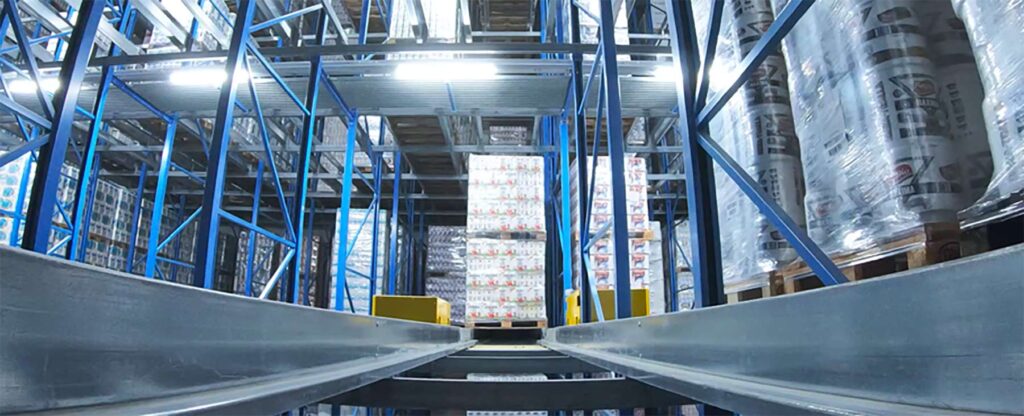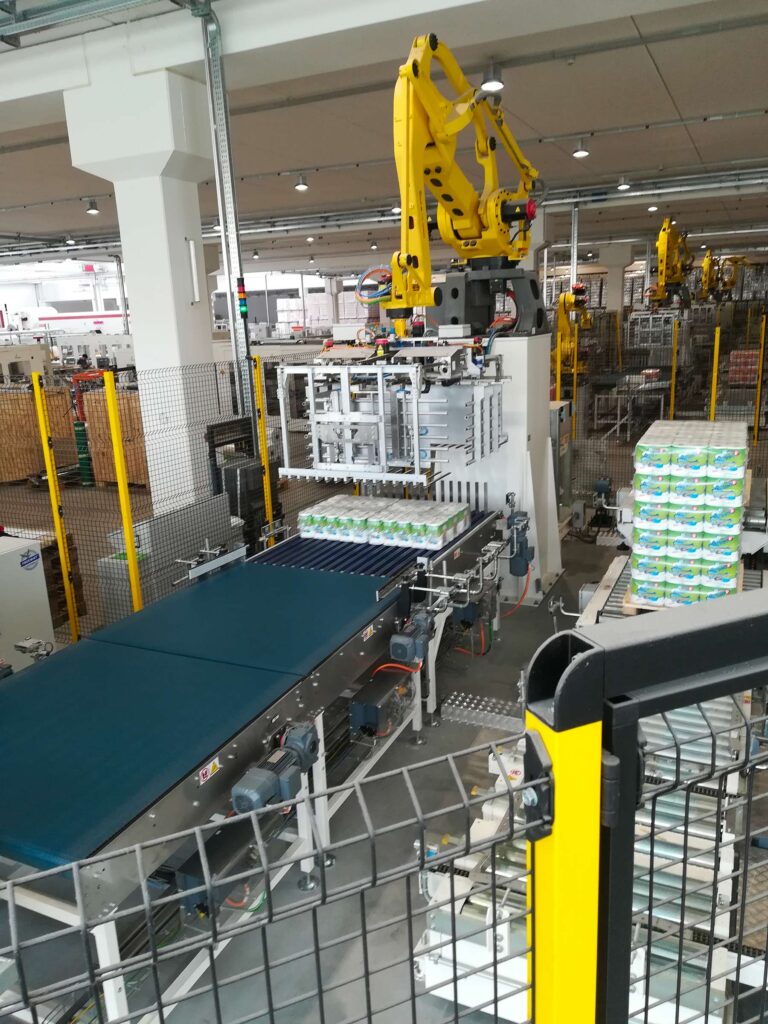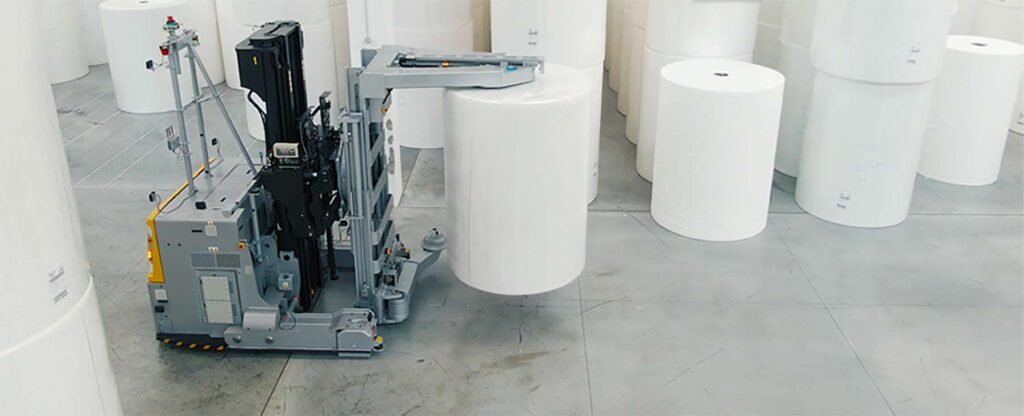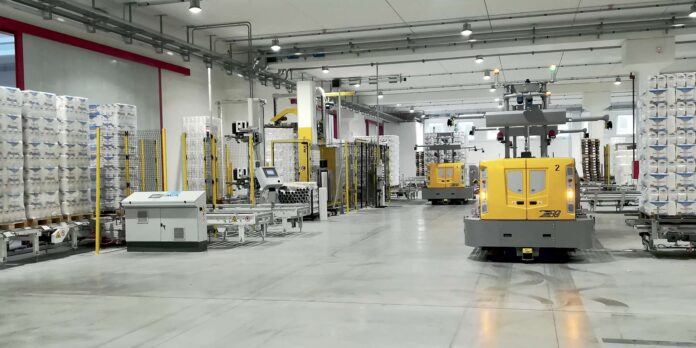Many smaller companies doubted ROI from automatic assets combined with smart software, but those days should be over, says William Nelson, President, E80 Group North America. A TWM report.
One of the most common statements I’ve heard over the years goes like this: “Yes, we’d love to be able to afford to do that like the Big Guys are doing.” But is this statement pertinent today? Is automation only the domain of the “Big Guys,” or is it time to re-think this well-worn theory that automated material handling requires size to justify traditional ROI? Let’s take a look at what we have been able to execute so far:
• Just about any function in material handling can be automated:
– warehousing of finished products and raw materials in block storage or racks of any type;
– fully cubed trailers are loaded automatically;
– parent rolls are stored and delivered into the rewinder;
– raw materials are directly delivered to production assets;
– most recently, trailers are unloaded automatically.
• Automatic vehicles support operations, allowing managers to focus on productivity, efficiency, and maintenance.
• Automatic guided vehicles do the job of multiple operators 24/7/365, delivering goods to the right place at the right time.
• Combine automatic assets with a smart software platform, and you have a robust decision-making structure that is as adaptable as it is repeatable.
• Automation is scalable, meaning it can grow and evolve as a plant changes over time.
• Safety developments enhance the workplace experience.
Doesn’t every tissue producer require the same essential functions as above? We move input materials in and ship finished goods out; therefore, the challenge isn’t in identifying WHAT to do. Instead, it’s in knowing HOW to do it.
Anyone who has walked the floor of an automation show in the last years can clearly see that a wide range of automated vehicles come in a dizzying array of shapes, sizes, and costs. So, how does one decide what to buy?

This is where experience, expertise and capabilities of suppliers come into play. First-time experimenters with automation may decide that an A-to-B repetitive task may be ripe for automation because it’s easy to execute and costs very little – this approach is comparable to buying a casepacker, being a highly repetitive and tedious task requiring multiple operators.
But what if we take this case one step further?
What if we are able to combine and manage all the functions stated in the bullets above under a software umbrella that employs single automated vehicles to perform multiple tasks in an orchestrated flow that even allows for a combination of disparate vehicle types to work collaboratively within a single area like bees around a hive while still ensuring the safest of all work environments?
What if all these simultaneous functions only require one person to oversee them, so you can re-locate and value the people in charge of the floorspace? Does the picture of how to realise the benefits of automation become clearer? All this is possible through an integrated combination of Smart Decision Maker (SDM) and vehicle mission manager. In essence, the decisions regarding the actions necessary to feed lines, pull products and ship are all coordinated by one brain capable of determining priorities from hundreds of scenarios while directing the vehicle assets to interact efficiently among themselves.
As an analogy: imagine if all the delivery drivers in Chicago, Paris, or Mexico City, all were coordinated to safely deliver specific goods based on established priorities to a particular destination at a scheduled time by taking a path that avoids traffic congestion yet can adapt to changing circumstances in real time. Think of all the time and money saved!

Well, that’s precisely the advantage of an integrated system composed of smart decision-making software and vehicle management. To name just a few benefits:
• System throughput guaranteed tied to meaningful KPI
• Single durable interface for performance monitoring and troubleshooting
• Scalability to grow and adapt the system to changing requirements without complicated interfacing of multiple vendors
• Safety improvement due to ground-breaking technology integrated into system functionality
All this brings us back to our original question: Can anyone afford NOT to automate? The answer is: of course, you can forego automation and add it later. But at what price? Your return on safety, customer satisfaction and productivity really depends on HOW you automate and with whom.

The old paradigm of automation as a luxury of the “Big Guys” is lore from days gone by. Today, everyone feasibly can consider automated material handling. More and more companies espouse the benefits of automation with glossy videos and fancy blinking lights. Nevertheless, the devil is still in the details.
Choose the right partner willing to dig in and get to know your business, who has the experience to guide you through your process requirements, the capability to simulate your flows with the highest accuracy, and who delivers a system performance guarantee. So the answer to the question becomes evident: Can anyone afford to NOT automate in light of these benefits?
This article was written for TWM by William Nelson, President E80 Group North America.




























